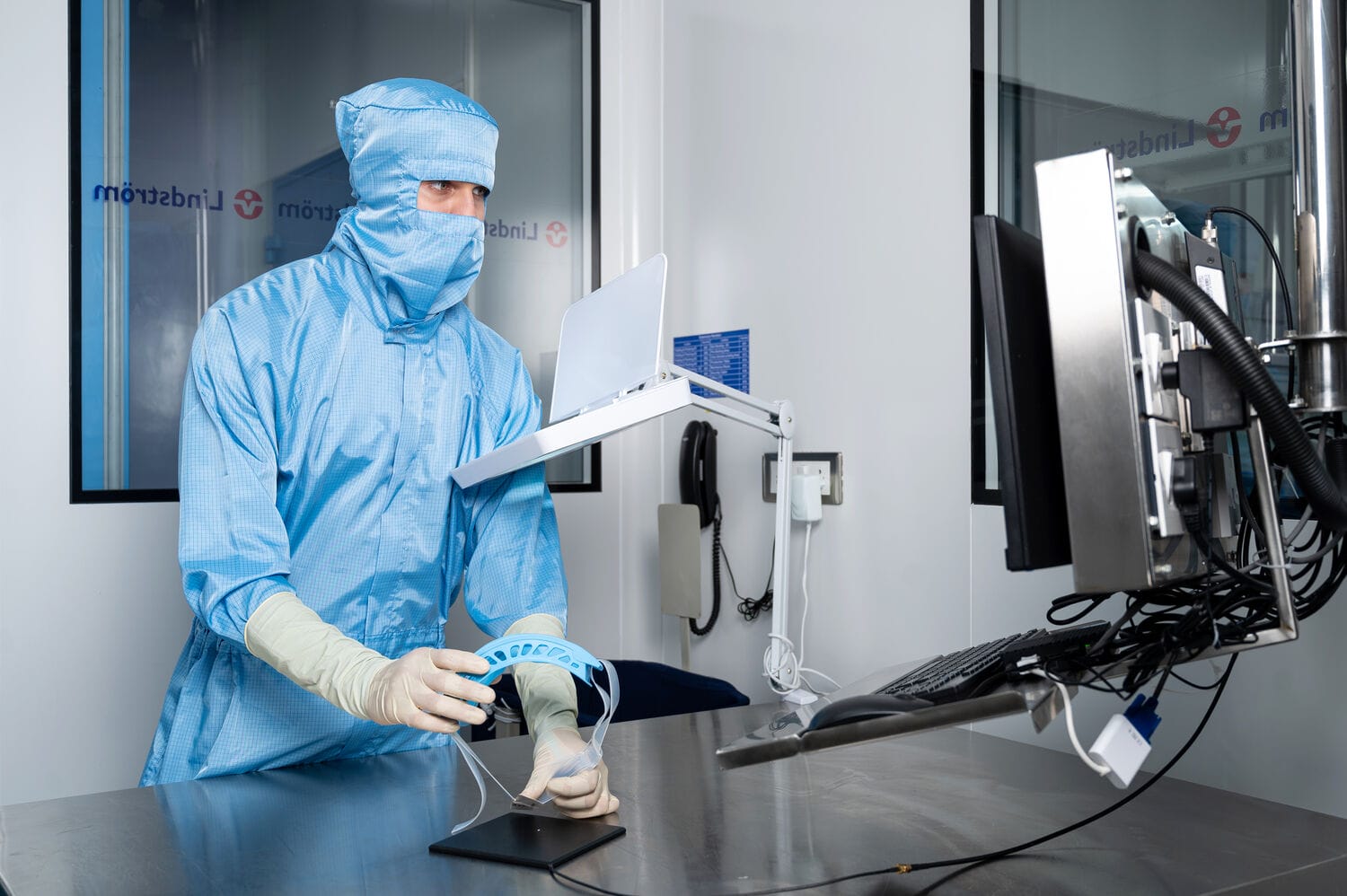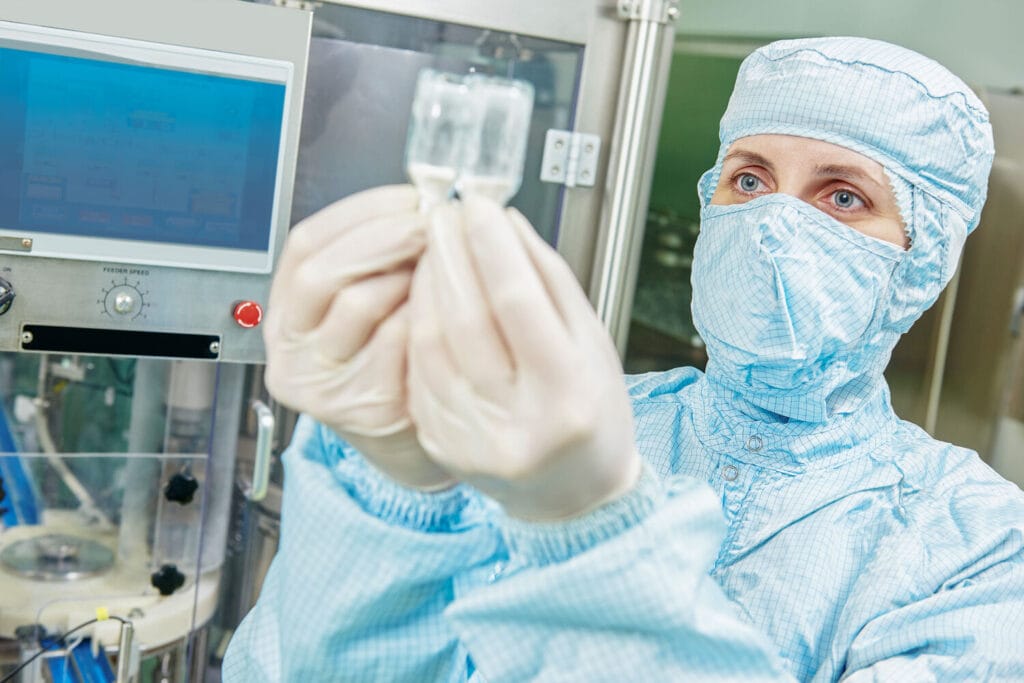
What is the full form of a PPE kit and why is it important?
Personal Protective Equipment, or PPE, plays a vital role in keeping people safe at work. Whether it’s in a cleanroom, on a construction site, or in a healthcare setting, PPE helps protect against risks such as chemical exposure, airborne pathogens, and physical injury. These tools act as a shield between workers and the hazards they may face in their daily tasks.
In industries like pharmaceuticals and manufacturing, PPE is essential: helping to ensure safety, maintain hygiene standards, and prevent contamination, especially in high-risk environments.
Full form PPE kit – what does PPE even stand for?
The term “PPE” stands for Personal Protective Equipment. Each part of a PPE kit serves a purpose:
- Personal: Tailored for individual use.
- Protective: Shields against harm.
- Equipment: The gear itself, from gloves to respirators.
Understanding the full form of PPE kit highlights how each component helps prevent workplace injuries and illnesses.
Why full form PPE kits are crucial in different industries
Every industry faces its own challenges, and PPE adapts accordingly:
- Healthcare: PPE like masks, gloves, and gowns protect staff and patients from infections. During health crises like pandemics, PPE becomes even more critical.
- Construction: Helmets, safety boots, and reflective clothing protect workers from impact injuries and visibility issues.
- Manufacturing and chemicals: Goggles, gloves, and respirators protect against harmful substances and airborne particles.
By using PPE correctly, companies protect their teams and reduce downtime caused by workplace incidents.
What does a typical PPE kit include?
A standard PPE kit contains several items, depending on the job. These might include:
- Masks: To guard against airborne hazards.
- Gloves: To prevent contact with harmful materials.
- Goggles or Face Shields: To protect the eyes from splashes or particles.
- Gowns or Coveralls: To protect skin and clothing from contamination.
- Earplugs or Earmuffs: To reduce the impact of noise in loud environments.
Each item contributes to the overall safety of the wearer and the cleanliness of the workspace.
Standards and regulations that shape full form PPE use
PPE must meet strict standards to ensure it works as intended. International bodies like the International Organization for Standardization (ISO) and the Occupational Safety and Health Administration (OSHA) provide guidelines on PPE design and performance. In the European Union, the CE mark confirms that PPE meets safety and environmental standards.
National agencies may also add their own regulations, ensuring PPE meets local workplace safety laws.

Explore the principles of ISO 9001 and how we continuously improve our processes to ensure excellent customer experience.

Explore why ISO Class 7 cleanrooms need sterilised garments to maintain standards, contamination control, and safety. Learn more.
Checklist for choosing and maintaining PPE Kits
Selecting the right PPE is only the beginning. To keep workers safe and operations compliant, companies need to regularly assess their equipment and procedures. Use this checklist to evaluate whether your PPE programme is fit for purpose:
Choosing PPE
- Does the equipment meet ISO, CE, or other relevant safety standards?
Always check that your PPE complies with recognised international or local regulations. - Is the PPE suitable for the specific risks in your environment?
Match equipment to actual workplace hazards: what works in healthcare may not suffice in chemical processing. - Are sizes and fit options available for all employees?
Ill-fitting PPE can compromise protection and discourage proper use. - Is the material suitable for long-term wear?
Look for breathable, durable materials that don’t hinder movement or comfort.
Maintaining PPE
- Is the equipment inspected regularly for damage or wear?
Set up a routine inspection schedule and train staff to report defects. - Do employees know how to wear, remove, and store PPE correctly?
Conduct regular training and refreshers to reduce contamination risks. - Is worn or damaged PPE repaired, replaced, or retired promptly?
Delays in replacement can put users at risk and reduce operational efficiency. - Are cleaning and maintenance handled professionally?
PPE must be hygienically laundered and maintained according to manufacturer guidelines or standards. - Is usage data tracked to ensure inventory stays sufficient?
Use digital tools to monitor PPE demand and avoid shortages—especially in critical areas like cleanrooms.
PPE challenges and ongoing innovations
Even though PPE is widely used, it comes with challenges. Sourcing enough PPE during emergencies can be difficult. Fit and comfort also matter: if PPE is uncomfortable, workers may not wear it correctly.
To solve these issues, manufacturers are creating PPE that’s more comfortable and more advanced. Lightweight materials and breathable fabrics help improve wearability. These innovations help ensure workers stay protected and feel comfortable throughout their shift.

FAQ – Common questions about PPE
What does PPE stand for?
PPE stands for Personal Protective Equipment. It’s used to protect people from workplace hazards.
What are some examples of PPE?
Examples include gloves, masks, safety boots, helmets, goggles, and gowns. Each is designed to protect different parts of the body.
Why is PPE important in healthcare?
It helps prevent the spread of infections and protects both patients and staff from disease exposure.
How does PPE help in construction?
It prevents injuries from falls, machinery, and heavy objects by using equipment like helmets and safety footwear.
Who sets the standards for PPE?
Bodies like ISO, OSHA, and national agencies set rules to ensure PPE performs well and meets safety requirements.
What are some challenges in PPE use?
Challenges include ensuring a good fit, maintaining comfort, and managing supply during emergencies. New designs and smart features are helping address these issues.


